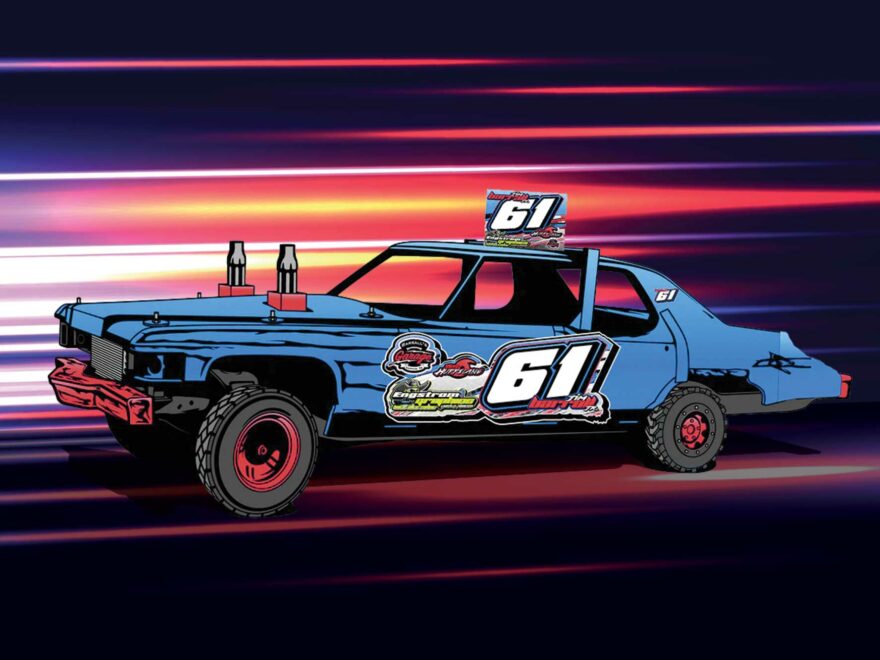It’s fair to say that in general Motorsport is a world that thrives on speed, precision, and the pursuit of victory.
However, amidst the roar of high-performance engines and the pursuit of podium finishes, there exists a unique and exhilarating form of motorsport that simply embraces chaos and destruction – it’s called the Demolition Derby.
Demolition Derby is a one-of-a-kind event that brings together fearless drivers and a sea of battered vehicles, captivating audiences with its adrenaline-fueled collisions and unpredictable outcomes – and as with many epic motorsport events, the origins of the demo derby are somewhat vague.
As various historical pictures will attest the sport’s roots can be traced back to the American county fairs of the early 20th century, where it began life as a side attraction, however, it quickly gained popularity and subsequently became a ‘thing’.
Most credit Don Basile with inventing and carrying out the very first demolition derby at Carrel Speedway in 1947, but this has also been challenged as the event was more of ‘a race with secretly rigged cars that became disabled upon impact’, opening the door for Larry Mendelsohn’s Long Island event in the 50’s to be credited too. Either way, the ‘60s saw the derby begin to take a firm foothold across the States and it began spreading across other continents too with the likes of Australia enjoying the smashing spectacle. In fact it became so popular there that a 100 minute, 75-car event at Rowly Park Speedway, Adelaide in 1963 attracted over 20,000 spectators!
The 1970’s were the golden years for the demo derby, with events being televised far and wide and hit TV shows such as ‘Happy Days’ making the less informed public more aware of the sport. Unfortunately, as quick as their rise was over that decade, the 80’s saw their return to a more supportive role at both fairs and speedways, and since then, the media’s love affair with the gladiatorial-style sport has been ‘complicated’, with regular signs of a resurgence mixed with several bouts of indifference.
New Zealand joined the ‘Stockcar’ party in 1954, with its first-ever race held at Aranui Speedway in Christchurch being influenced by the USA’s Jalopy racing and Demolition Derbies of the time. Working in with the Stockcar/Speedway meets, the smash ‘em up derbies emerged as local crowd-pleasers from the early 60’s onwards, and NZ’s very own Ellesmere Motor Racing Club held New Zealand’s first ever Caravan Demolition Derby, which featured on various television channels around the world.
While the Demolition Derby may appear to be a free-for-all automotive brawl, it follows a set of rules to ensure driver safety and fair competition. The exact regulations can vary depending on the event and location, but certain rules apply universally. Drivers must remove all glass, flammable materials, and loose objects from their vehicles before competing and roll bars and a full-harness seat belt (4-5 point), are mandatory to protect drivers from the intense impacts. (In NZ) Minimum age is 16, all competitors must hold either a Speedway NZ One-Day Derby Licence or a full SNZ licence and only have a maximum of 18 litres of petrol in the tank.
When it comes to the ‘race’ itself, the Demo Derby is the last race of the meet and the track surface is heavily watered to reduce vehicle speed. The intention is obviously to demolish the opponent’s vehicles and those not competing in the spirit of this intention can be excluded – avoiding hits is frowned upon. Cars can only move forward on the track and in an anticlockwise direction, (strictly within the confines of the track) and competitors are disqualified if driving on the infield unless the track is completely blocked. A competitor that is immobilised for more than ONE minute is deemed out of the Derby – and the winner is the last car standing/running.
It may not look like it from the outside, but the Demolition Derby requires strategic thinking from its participants. Experienced drivers employ different techniques to maximise their chances of survival and triumph. Some opt for a defensive approach, avoiding collisions and conserving their vehicles’ functionality until the competition thins out – Boo. While others adopt an aggressive style, targeting opponents with calculated precision – Yay. However, luck often plays a significant role.
Derby events are held at speedway parks across the country and although the names, teams and vehicles may vary, the thrills and carnage remain just as smashing as when they first began. These events are a must-see experience right now, as with the global move towards EVs, Derbies are alas, something that won’t be around forever.
Dave McLeod – Motoring Writer


